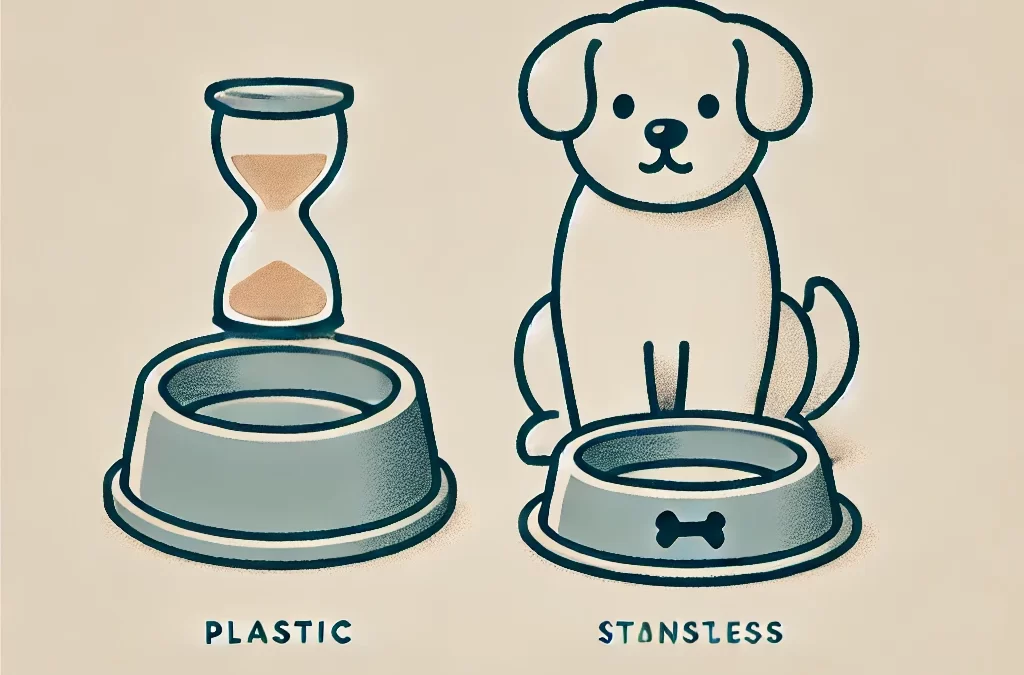Plastik jest wszędzie w naszym codziennym życiu, od pojemników na żywność po artykuły gospodarstwa domowego, a nawet w produktach zaprojektowanych dla naszych futrzanych przyjaciół. Ale czy ten pozornie nieszkodliwy materiał może stanowić zagrożenie dla zdrowia naszych psów? Nowe badania sugerują, że długotrwałe narażenie na niektóre rodzaje plastiku może zwiększać ryzyko zachorowania na raka u psów. Przyjrzyjmy się nauce i temu, co właściciele zwierząt domowych mogą zrobić, aby chronić swoje pupile.
Ukryte zagrożenia związane z tworzywami sztucznymi
Wiele rodzajów plastików zawiera szkodliwe substancje chemiczne, takie jak bisfenol A (BPA), ftalany i polichlorek winylu (PVC). Te substancje chemiczne są często używane do nadawania plastikowi trwałości, elastyczności lub przezroczystości. Mogą jednak przedostawać się do żywności, wody, a nawet środowiska, zwłaszcza gdy plastik jest podgrzewany, zarysowywany lub degradowany.
U zwierząt te substancje chemiczne mogą działać jako substancje zaburzające gospodarkę hormonalną, zakłócając funkcjonowanie hormonów. Długotrwała ekspozycja może prowadzić do zmian komórkowych, stresu oksydacyjnego, a nawet powstawania guzów, zwiększając prawdopodobieństwo zachorowania na raka. W przypadku psów, których codzienne nawyki często obejmują żucie, lizanie i bliski kontakt z różnymi materiałami, ryzyko jest spotęgowane.
Codzienne źródła kontaktu psów z plastikiem
- Miski na jedzenie i wodę:Wielu właścicieli psów nieświadomie używa plastikowych misek, które mogą uwalniać szkodliwe substancje, zwłaszcza jeśli zostaną porysowane lub wystawione na działanie promieni słonecznych.
- Zabawki do żucia:Zabawki plastikowe niskiej jakości często zawierają materiały nieobjęte regulacjami, które mogą stwarzać ryzyko w przypadku połknięcia lub długotrwałego żucia.
- Opakowanie:Przysmaki dla psów, sucha karma i inne produkty są często przechowywane w opakowaniach plastikowych, z których mogą przedostawać się do żywności substancje chemiczne.
- Artykuły gospodarstwa domowego:Psy często mają kontakt z plastikowymi przedmiotami w domu, od pojemników po meble.
Ryzyko zachorowania na raka związane z plastikiem
Podczas gdy bezpośrednie powiązania między narażeniem na plastik a rakiem u psów są nadal przedmiotem badań, dowody z badań na ludziach i zwierzętach wskazują na niepokojący związek. U psów nowotwory, takie jak guzy piersi, rak jąder i chłoniak, mogą być pod wpływem toksyn środowiskowych, w tym tych znajdujących się w plastiku. Mniejsze rasy lub psy z wcześniej istniejącymi problemami zdrowotnymi mogą być szczególnie narażone.
Kroki mające na celu ograniczenie narażenia na plastik
Właściciele zwierząt domowych mogą podjąć działania zapobiegawcze, aby zminimalizować narażenie swojego psa na szkodliwe tworzywa sztuczne:
- Przejdź do Safer Bowls: Do jedzenia i wody używaj misek ze stali nierdzewnej, ceramiki lub szkła, a nie plastikowych.
- Wybierz zabawki wysokiej jakościWybieraj zabawki nietoksyczne, wolne od BPA lub wykonane z naturalnych materiałów, takich jak guma.
- Przemyśl przechowywanie: Przechowuj karmę i przysmaki dla psów w szczelnych pojemnikach wykonanych ze szkła lub stali nierdzewnej, zamiast pozostawiać je w oryginalnym plastikowym opakowaniu.
- Sprawdź swój dom:Ogranicz dostęp psa do przedmiotów z tworzyw sztucznych niskiej jakości, które mógłby pogryźć lub połknąć.
- Unikaj podgrzewania plastików:Nigdy nie podgrzewaj w kuchence mikrofalowej jedzenia ani smakołyków w plastikowych pojemnikach, gdyż wysoka temperatura przyspiesza wypłukiwanie substancji chemicznych.
Wspieranie bezpieczniejszych standardów
Oprócz osobistych wyborów, właściciele zwierząt domowych mogą orędować za lepszymi standardami bezpieczeństwa w branży produktów dla zwierząt domowych. Wspieranie marek, które stawiają na nietoksyczne materiały i zrównoważone praktyki, wysyła silny komunikat. Ponadto, pozostawanie poinformowanym o wycofaniach produktów lub pojawiających się badaniach może pomóc chronić psa przed ukrytymi ryzykami.
Szerszy obraz
Chociaż plastik jest wszechobecny w nowoczesnym życiu, nie można ignorować jego potencjalnego wpływu na zdrowie. Dla naszych psów ograniczenie narażenia na szkodliwe plastiki jest prostym, ale skutecznym sposobem na wspieranie ich długoterminowego zdrowia i dobrego samopoczucia. Podejmując świadome wybory i szerząc świadomość, możemy zapewnić naszym pupilom szczęśliwsze, zdrowsze życie.















